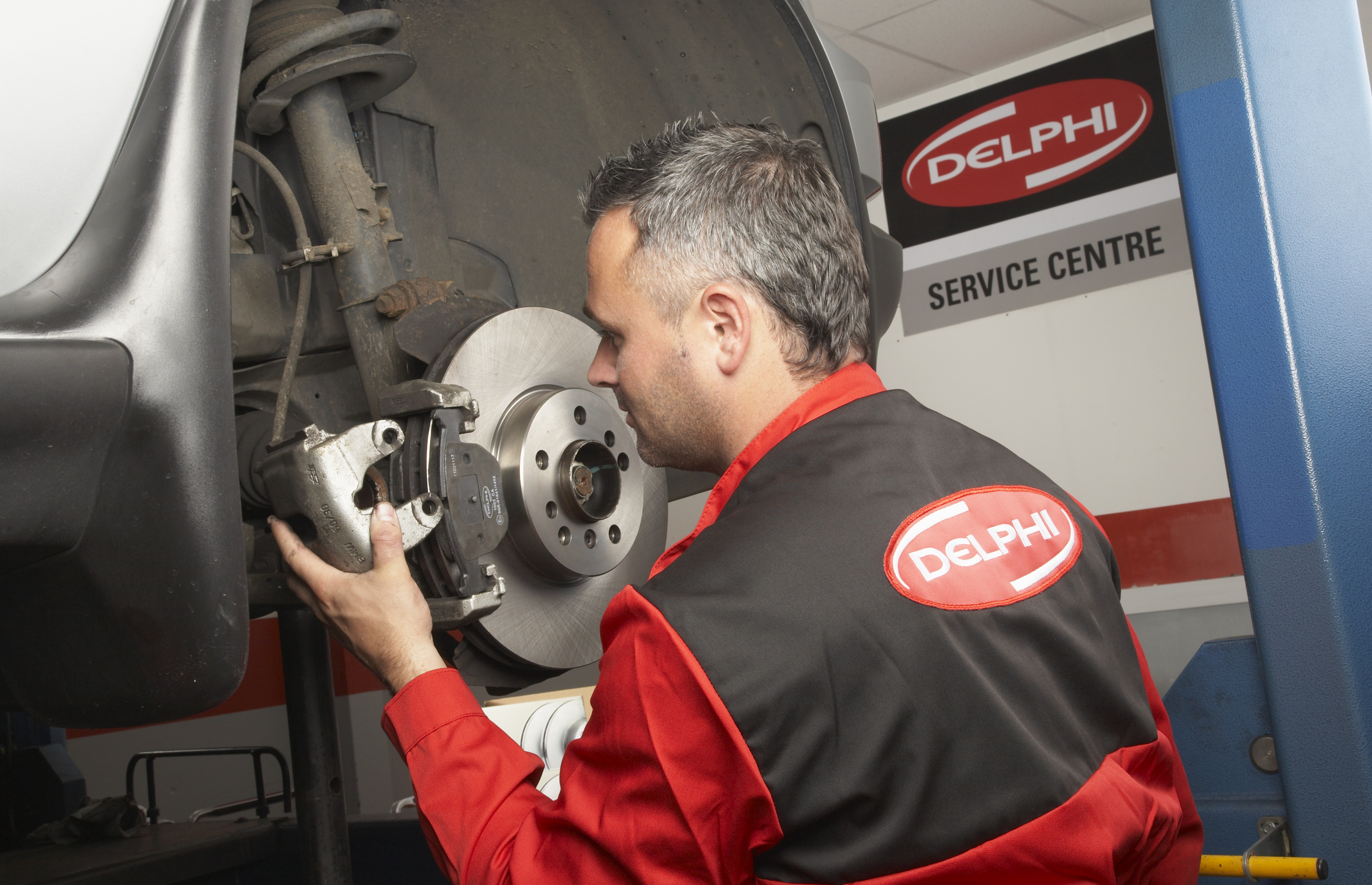When it comes to safety critical braking components, there’s a tendency to think of pads and discs. But you’re missing one vital part of the system – the caliper. After all, the caliper is what squeezes the pad against the disc, generating the stopping power to bring the vehicle to a halt. So it stands to reason that you’ll want to look after the caliper too. Delphi explains.
Why is it important to service the caliper?
Whilst it’s unlikely that you’ll need to replace the entire caliper, they can seize with time. Ongoing maintenance is therefore critical and should be included as part of any routine brake service, especially when replacing the brake pads. Remember, they’re subjected to the same stresses as any other part of the system – dirt, dust, intense heat etc. All this can take its toll, especially on the caliper’s piston boot, which is prone to cracking or hardening. If this is not dealt with, moisture can get into the caliper, causing the slider pins to rust and eventually seize. If this happens, the caliper will not be able to fully retract the brake pad from the disc, creating friction even when the brakes are not applied. This can cause many problems, including brake drag, overheating, brake fade and hot spots on the brake discs, leading to uneven wear and potentially irreparable damage to both the pads and discs – parts that otherwise may not have had to be replaced.
Common causes of seized calipers
Whilst a number of issues can cause a seized caliper, the most common are:
- Caliper sliders: Over time these can rust or trap debris that will prevent the pads from sliding.
- Caliper bolts: These need to stay well lubricated – like the sliders, dry bolts can build up debris and rust, causing the calipers to stick.
- Brake hoses: These degrade naturally over time – when this happens, there is a chance your brake fluid can leak, causing failure of the brake system.
What to look out for
Although it’s advisable to service the caliper every time the pad is replaced, there are a few tell-tale signs to look out for. Spot any of these and you’ll need to inspect and potentially repair the caliper:
- In most cases, a seized brake caliper manifests itself in reduced braking power. Usually, when a brake caliper piston seizes, the brake pad on the side of the caliper piston will wear excessively. Eventually, the brake pad will wear down so much that it can affect the brake disc, which will get damaged. If the caliper slider seizes, it usually results in an excessively worn outside pad.
- Another common symptom is the vehicle pulling to the left or right. A seized caliper will not properly retract, causing a constant drag on the affected wheel and resulting in the vehicle being unstable under braking.
- A seized caliper can cause an uneven build-up of pad material and hot spots on the disc, resulting in disc thickness variation and potentially brake judder. It can also result in brake system overheat and fade, reducing stopping power.
Servicing calipers with Delphi slider kits
Aside from the obvious safety and braking performance issues, it pays off long term to service calipers regularly. As well as preventing bigger, more expensive repairs in the future, it will help to ensure the caliper lasts for the life of the vehicle. Delphi’s caliper slider kits contain everything you need for a professional and efficient caliper service. Each kit consists of:
- Sliders
- Slider seals
- Slider lubricating grease
- Mounting bolts
In addition to a full range of slider kits for both left and right calipers, Delphi offers an extensive range of brake hoses, designed and tested for maximum corrosion resistance, long wear and minimum expansion.











